Part 3 of 4 – Large Play visions Prehistoric mammals
Dust funnels swept across the dry and hot landscape. It’s been months since the last rain and the vegetations, once lush, has now turned brown. Animals that inhabit this environment are under tremendous stress as they seek out food and shelter from the exhausting heat. In a dried up waterhole, a huge carcass lay desiccated by the mid-day heat, the animal succumbing to starvation.

Although many large herbivores perish during drought, some carnivores actually thrive, feeding on the unfortunate victims. In the distance, one of this carnivore, a large one is seen making its way towards the dried up pond, drawn by the smell of the carcass. This is Andrewsarchus mongolienses, one of the largest and last of the truely gigantic land-based carnivore. It lived during the middle Eocens in what is now Inner Mongolia.
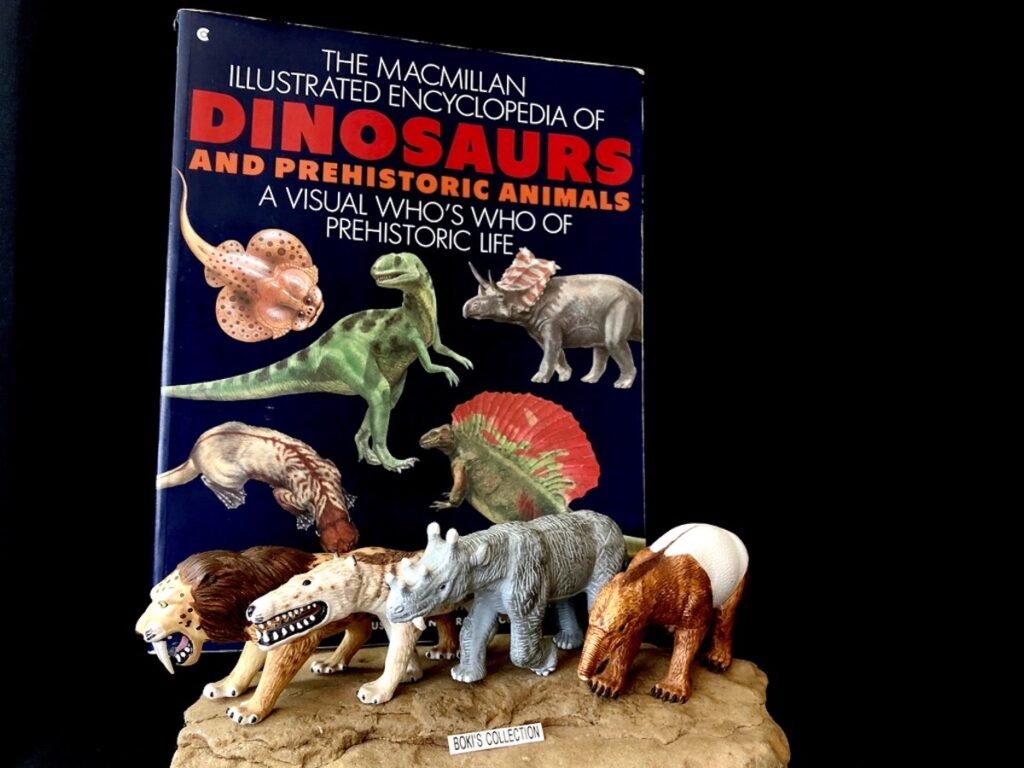
Andrewsarchus was the top predator of its time. Although only the skull is know of this mysterious beast, it had attain a level of popularity in the toy figure industry with a few versions out.Play visions included the species in their large and mini set of prehistoric mammals and it was one of the very first figure of this animal in toy form (Starlux also released one earlier in the 70’s or 80’s).
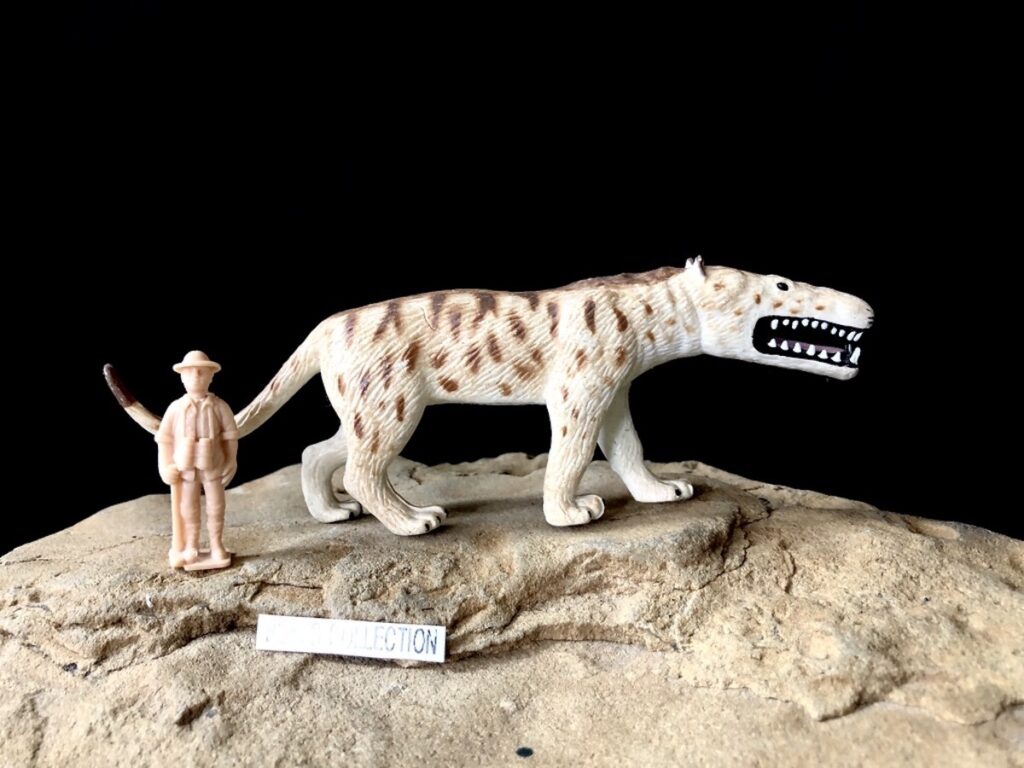
The figure is perhaps the most stylized out of the four large figure. There is something about how it looks that really gives it that odd feel. Of course if you look at the illustration it was based on, it actually looks fairly similar.But there is also another large predator mammal in the book that looks very similar, the Hyaenodon. The similarity is so close that in fact it is very hard to tell which illustration was used for the figure. This similarities caused confusion as to what its true identity is, even I still get confused.To make matter worst, the named stamped on the belly just says ” Hyena”! And to add more confusion, the mini version looks so different from the two mentioned that one wonders if this was another attempt to make a different animal but name it something else.
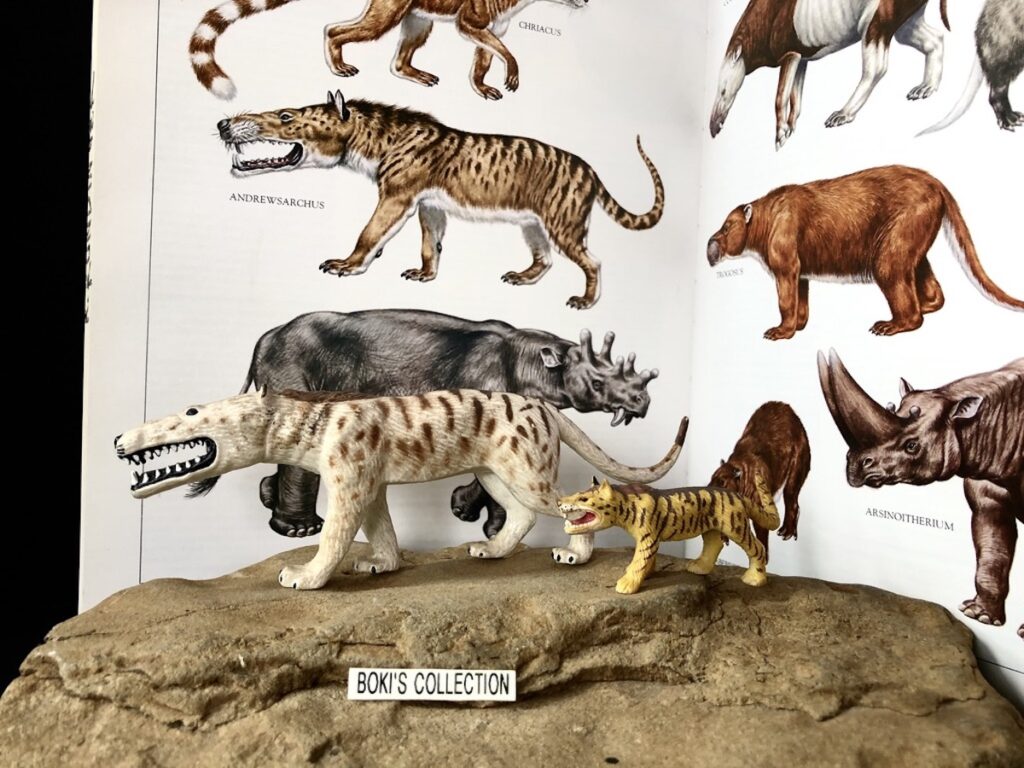
There is no standard scale size in the series so the figures are close to each other in size.The head is big as it should, and it is also long but with hardly any tapering as it reaches the snout, kind of remind me of a peanut! The odd way that the head is sculpted makes it hard to recognize the figure as an Andrewsarchus.
The mouth is open in what looks like a grin, with its big teeth all visible. The teeth are painted white and the gum-line and oddly inside of the mouth is outlined and painted in black. The tongue is visible and painted bubblegum pink which contrast sharply with the black mouth interior.
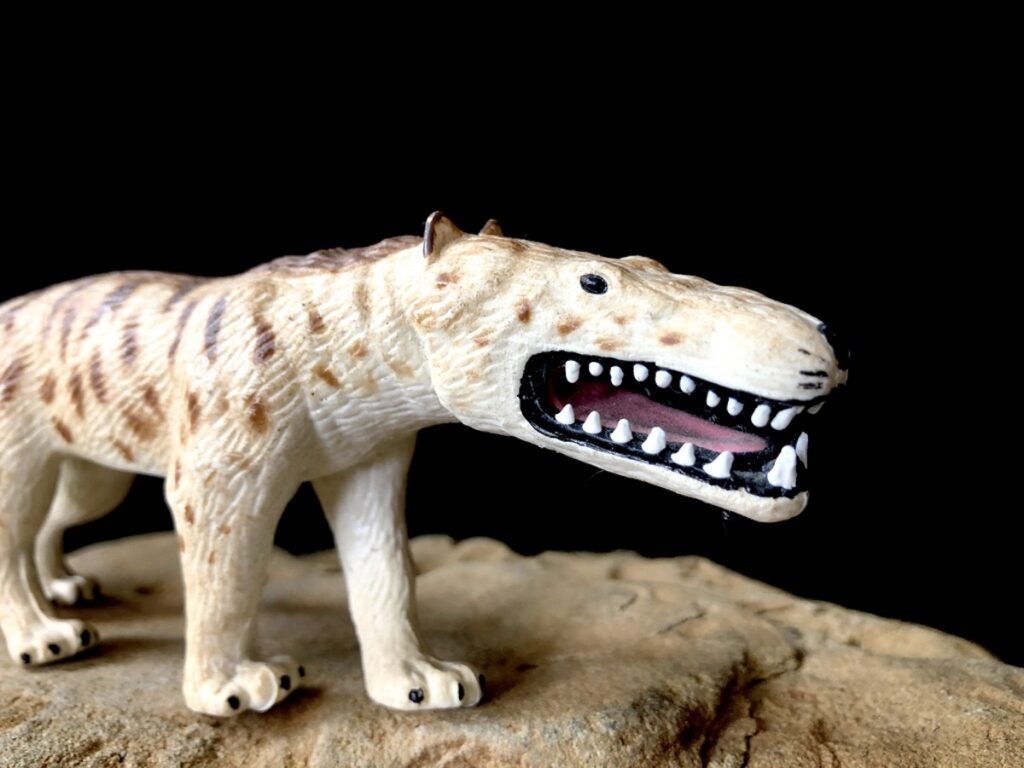
The small eyes are set far back on the head and are painted black. The nose is big and also painted black. The designers decided to give it whiskers that are big and painted on with black paint.The ears are also small and pointy and stick out from the top of the skull.On the nape, there is what looks like a mane and runs the entire length of the back, getting thinner as it follows the spine down towards the tail.
Since the skull’s discovery in 1923, no one has yet discovered any additional fossil material that can shed some light as to what the animal may look like. This incomplete fossil material had lead to a lot of speculation on what the body looks like. Originally thought and classified as a mesonychids ( carnivorouse ungulates).
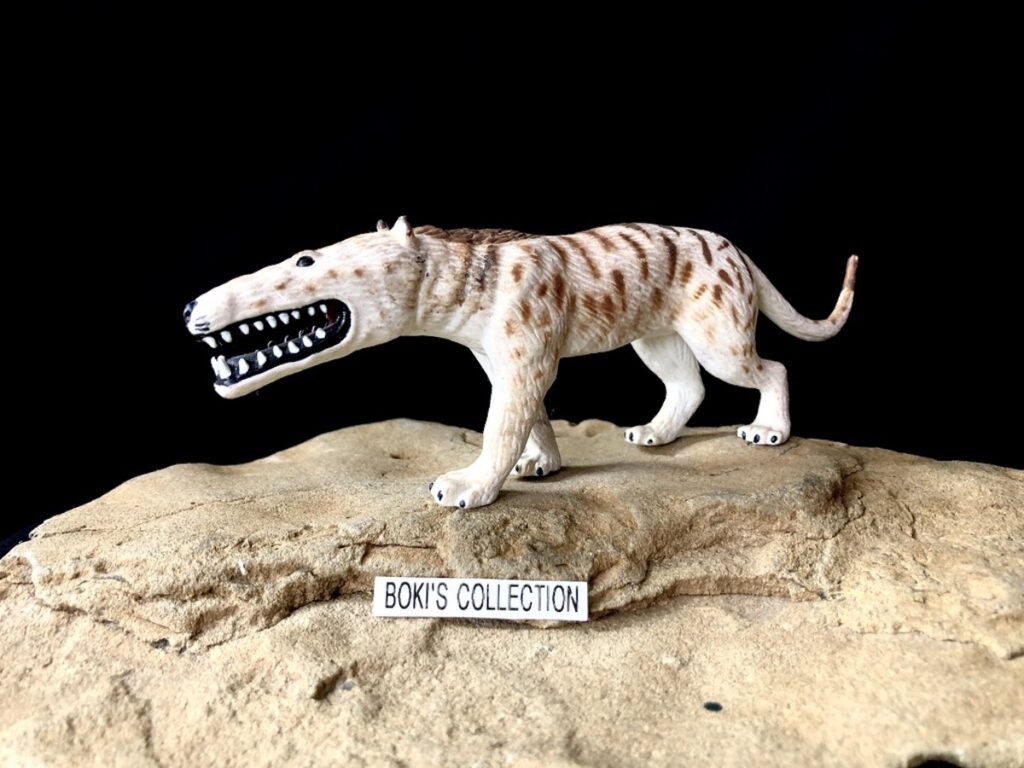
The most popular restoration by far is the wolf-like appearance, followed by the more recent pig or hippo-like. Until fossil evidence are found, the exact body shape of Andrewsarchus will remain a mystery.The figure’s body is long and narrow, somewhere between that of a feline and canine. It has a long tail that slightly curls upwards.The overall body color is a very light tan adorned with a darker brown spots. The spots vary in size, with smaller ones on the legs, face, and tail and larger ones on the main body.The tail has a tuft of hair on the tip and is also colored dark brown like the spots.The feet looks like that of a lion which to be fair, almost all of the figures currently available also have. The nails are painted black.
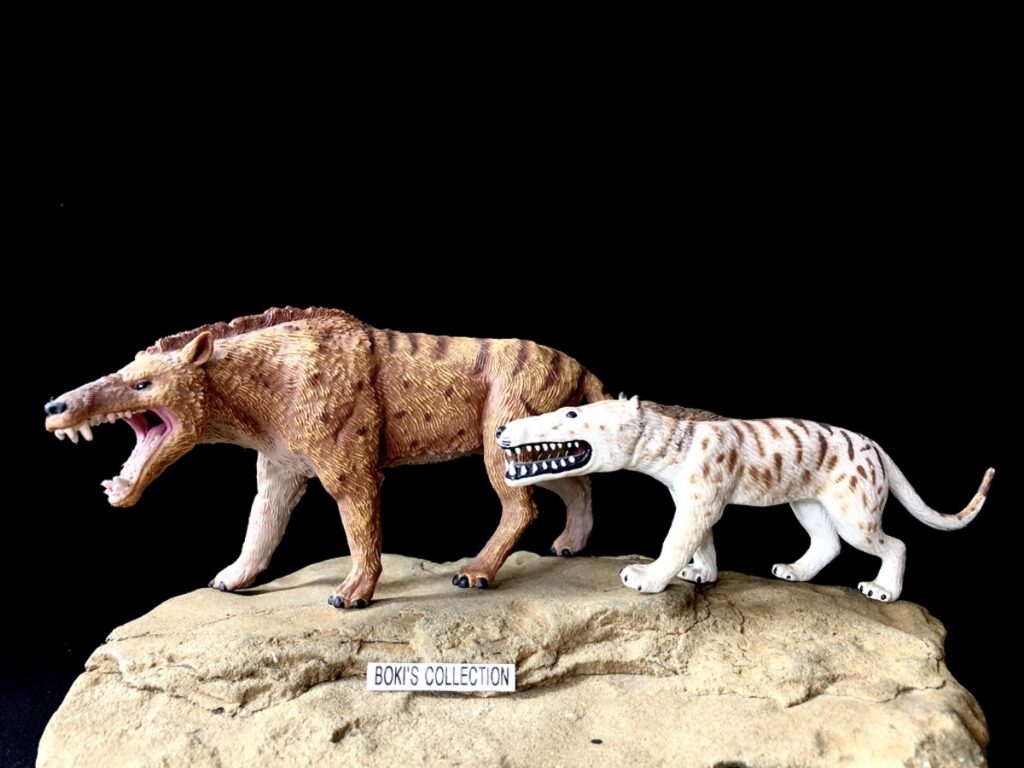
The almost comical look on this figure is exactly what makes it so endearing. Sure, there are far more accurate modern figures out there, but in my opinion, none of them have the same character as this one.As far availability goes, it is rare and often command high price, but it is one of the more affordable one from the set.
Mini Version – The small figure that is supposed to be its mini version looks nothing like the large one. I’m not exactly sure what it was based on.To me, it looks more like a cat, which is a possibility knowing how the designers love to throw in random names on most of these figures.This small figure is orange with dark brown stripes on the back that runs down the body.
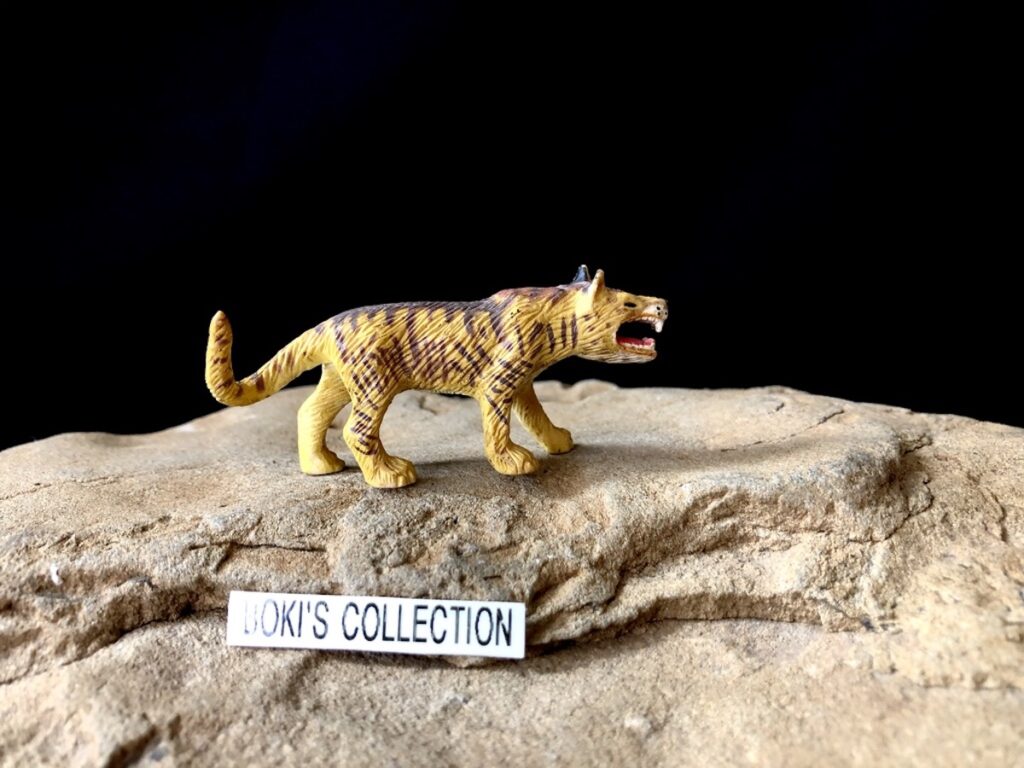
The head, once again looks more like that of a cat and is sculpted with the mouth open in what looks like a growl.The ears are also proportionally large and pointed compared to the large figure.The eyes are small and painted black, there is also an attempt to add whisker in the form of small black dots on the muzzle.The teeth are individually sculpted and the canines much larger than the rest. These teeth are painted white. The interior of the mouth is painted bubble gum pink unlike the black on the larger figure.
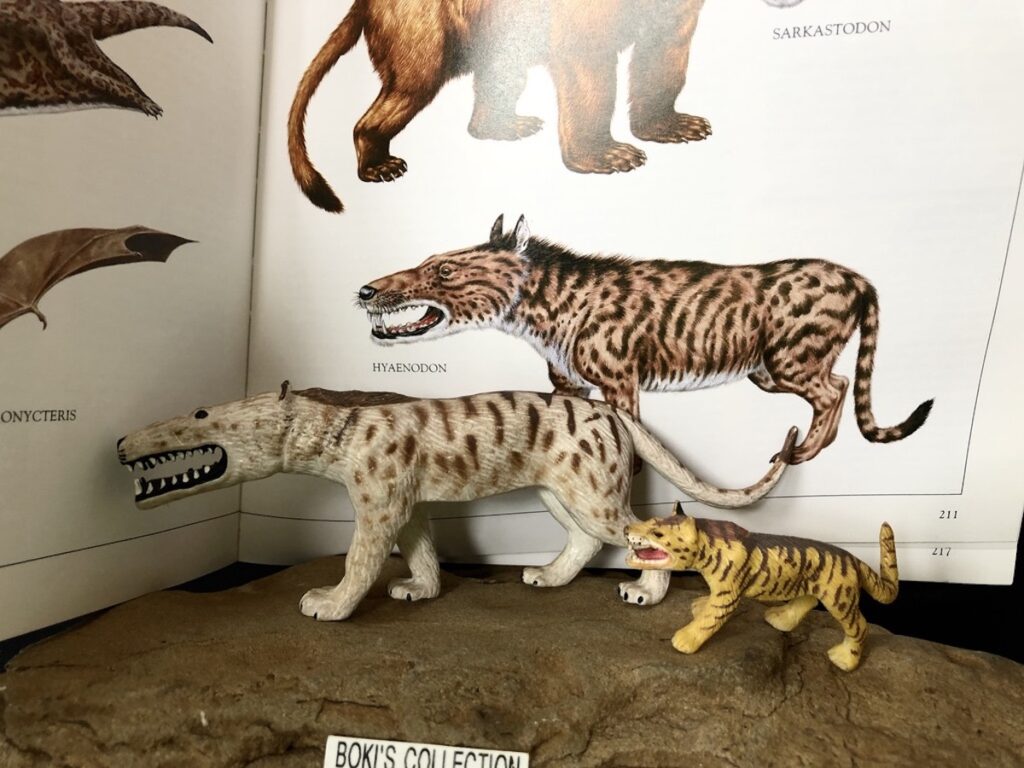
The legs, paws, and tail all looks like it was based on a feline and are robust, a little out of proportion to each other and the size of the figure.Seen side-by-side, these two don’t look anything like each other at all. Together, they look like two different animals meeting and reacting to each other.
As far as what Andrewsarchus ate, it is clear that meat is on the top of the menu. The big question is, was it an active apex predator that chase down prey? A large animal that bullied its smaller competitor to steal their food? For along time, this was the consensus, but recent research also suggest that it could possibly been both a hunter as well as scavenger like many apex predators do today.
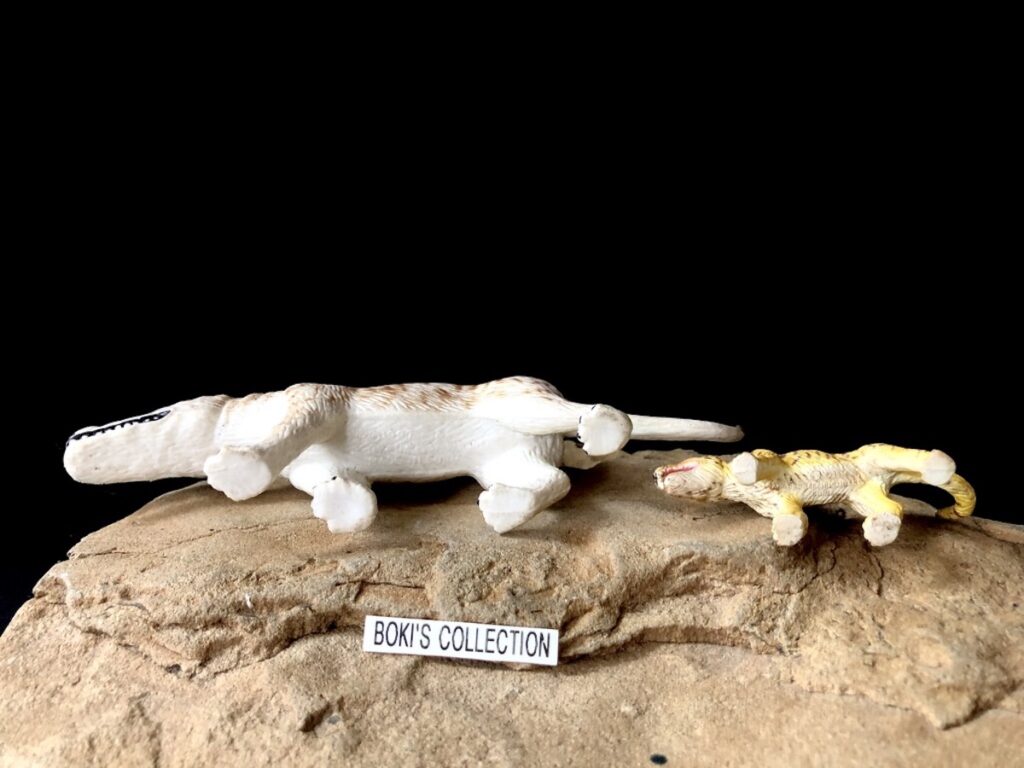
There is even a suggestion that since the skull was found in what was then a coastal environment, that Andrewsarchus was an active beach comber, searching the tideline for stranded animals or turtles ashore. Its very possible that Andrewsarchus evolved to be a specialized predator, exploiting a niche that was not exploited during its time.Whatever mode of hunting it employed, Andrewsarchus is without a doubt one of the most fearsome and largest predator that have ever lived.
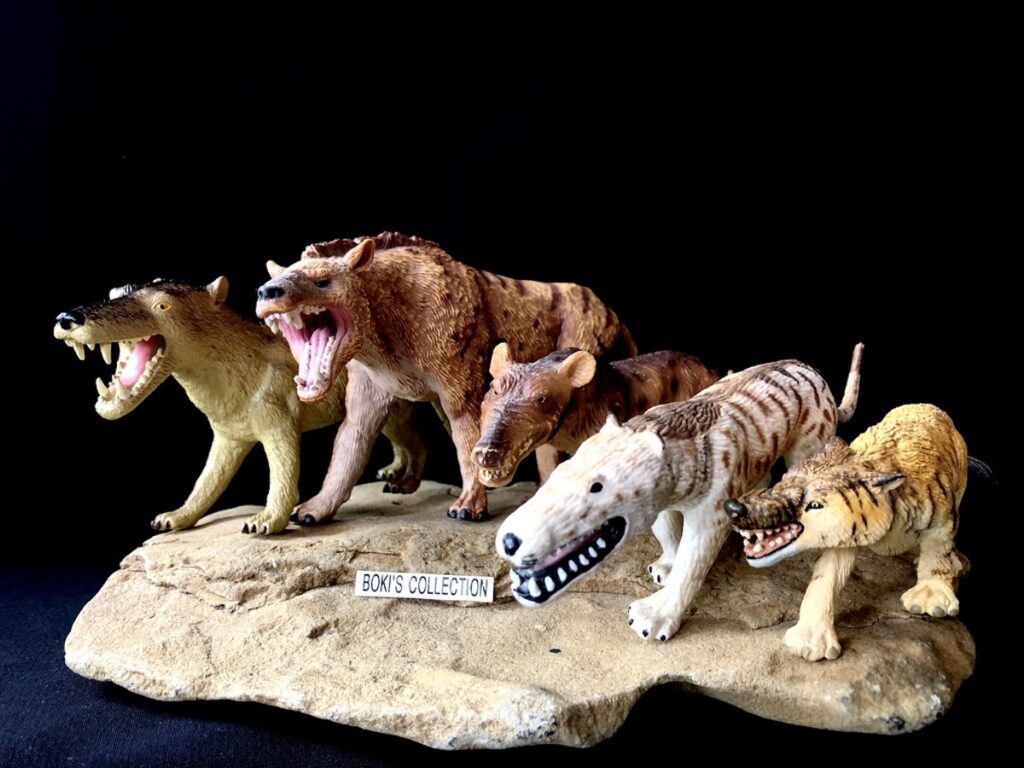
Despite its size, and perhaps due to it, it eventually went extinct. Climate change was also happening and quickly altering the landscape, forcing changes in prey distribution and types. Future top predators such as entelodonts, Hyaenodon, and Sarkastodon were all making their appearance and perhaps, being more adaptable, outcompeted Andrewsarchus. With their extinction, other large and terrifying mammal predators will soon evolve, move in, and take over the vacated spot.

That ends our review, one more figure from this set to go! Thanks for reading, hope you all enjoyed it. Until then, stay safe and healthy! Cheers!
Disclaimer: links to Ebay and Amazon on the DinoToyBlog are affiliate links, so we make a small commission if you use them. Thanks for supporting us!




It is a difficult figure to find. Thanks to UK who sold me theirs, I have that rare figure of a carnivorous mammal. That Andrewsarchus reminds me of a monstrous cross between a Pit Bull Terrier, a wolf and a Doberman, it reminds me of the mythical Greek hellhound dog.
Superb Bokisaurus Review